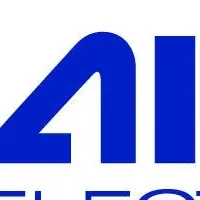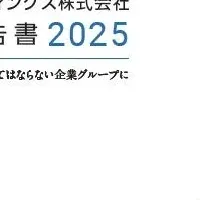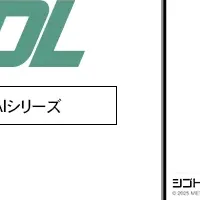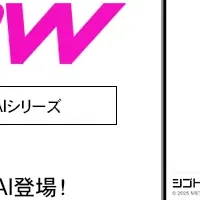
Sentry Survey Reveals Increasing Stress Among Executives in 2025
In a revealing study conducted by Sentry Insurance, a significant trend has emerged showing that 67% of executives in 2025 are experiencing heightened stress levels compared to the previous year. This survey, which included responses from 1,000 business leaders ranging from owners to CEOs and CFOs, underscores the complexities that today's executives navigate in the modern business landscape.
One of the most prominent concerns echoed by nearly half (47%) of the executives surveyed is the looming economic uncertainty. Following closely are pressing issues such as supply chain challenges (44%), rising healthcare costs (41%), labor shortages (38%), and inflation (36%). These factors not only cause anxiety but also influence strategic decision-making in companies of varying sizes.
The survey indicated a stark contrast between small and large enterprises. For example, small businesses, particularly those with 10 to 249 employees, demonstrated more optimism; almost half (48%) believe their company will prosper in 2025. In contrast, only 33% of leaders from larger companies, those with over 1,000 staff members, share this optimistic outlook. This disparity also extends to stress levels with 82% of executives at larger firms reporting increased stress, as opposed to 68% at smaller businesses.
In addition to economic woes, executives expressed significant concerns over external threats. A staggering 72% voiced apprehension about increasing litigation risks and the potential for costly verdicts within their industry. The survey also noted that 90% of leaders believe their organizations have been impacted by severe weather events, with two-thirds reporting operational outages that hindered their workflows.
Faced with these challenges, executive leaders are modifying their operational strategies to better manage risk and stress. A remarkable 97% admitted to postponing upgrades and necessary improvements due to financial constraints or limited resources. Among these deferred upgrades, 48% relate to equipment, 47% to cybersecurity measures, and 46% to technology enhancements.
Moreover, businesses are calling upon employees to meet higher expectations. 81% of executives disclosed that staff members are often tasked with responsibilities beyond their designated roles and training levels. This trend highlights the increasing demands placed on the workforce amid limited resources.
In light of evolving external threats, many executives show a desire to bolster their risk management frameworks. Approximately 74% lack confidence in the adequacy of their current insurance, prompting 42% to consider expanding their coverage. This is complemented by a commitment to enhance workplace safety, with 82% planning to elevate their investments in this area throughout 2025.
David Dickinson, the Customer Research Director at Sentry, emphasized the importance of managing risks in alleviating stress. He stated, “Executives are experiencing escalating external challenges and instituting strategies to secure their businesses’ futures. A critical theme from our research is that effective risk management is essential for mitigating stress.”
Organizations are not simply defending against risks but are also adapting their internal policies to prioritize employee safety and enhanced training. As they navigate these unprecedented challenges, leaders are growing increasingly creative in their resource allocations, all while acknowledging the need to safeguard revenue and foster growth despite the adverse conditions.
The findings from Sentry's survey capture a pivotal moment for business leaders in 2025. As they confront rising stress levels intertwined with multifaceted challenges, executives are compelled to rethink their approach to risk management and workforce engagement. With external pressures mounting, effective leadership will involve a delicate balance between navigating economic uncertainties and implementing robust internal strategies that support both employees and organizational resilience.
Economic Pressures Intensified
One of the most prominent concerns echoed by nearly half (47%) of the executives surveyed is the looming economic uncertainty. Following closely are pressing issues such as supply chain challenges (44%), rising healthcare costs (41%), labor shortages (38%), and inflation (36%). These factors not only cause anxiety but also influence strategic decision-making in companies of varying sizes.
The survey indicated a stark contrast between small and large enterprises. For example, small businesses, particularly those with 10 to 249 employees, demonstrated more optimism; almost half (48%) believe their company will prosper in 2025. In contrast, only 33% of leaders from larger companies, those with over 1,000 staff members, share this optimistic outlook. This disparity also extends to stress levels with 82% of executives at larger firms reporting increased stress, as opposed to 68% at smaller businesses.
External Threats Add to Executive Pressure
In addition to economic woes, executives expressed significant concerns over external threats. A staggering 72% voiced apprehension about increasing litigation risks and the potential for costly verdicts within their industry. The survey also noted that 90% of leaders believe their organizations have been impacted by severe weather events, with two-thirds reporting operational outages that hindered their workflows.
Strategies to Cope with Stress
Faced with these challenges, executive leaders are modifying their operational strategies to better manage risk and stress. A remarkable 97% admitted to postponing upgrades and necessary improvements due to financial constraints or limited resources. Among these deferred upgrades, 48% relate to equipment, 47% to cybersecurity measures, and 46% to technology enhancements.
Moreover, businesses are calling upon employees to meet higher expectations. 81% of executives disclosed that staff members are often tasked with responsibilities beyond their designated roles and training levels. This trend highlights the increasing demands placed on the workforce amid limited resources.
Preparedness and Safety Investments
In light of evolving external threats, many executives show a desire to bolster their risk management frameworks. Approximately 74% lack confidence in the adequacy of their current insurance, prompting 42% to consider expanding their coverage. This is complemented by a commitment to enhance workplace safety, with 82% planning to elevate their investments in this area throughout 2025.
David Dickinson, the Customer Research Director at Sentry, emphasized the importance of managing risks in alleviating stress. He stated, “Executives are experiencing escalating external challenges and instituting strategies to secure their businesses’ futures. A critical theme from our research is that effective risk management is essential for mitigating stress.”
Organizations are not simply defending against risks but are also adapting their internal policies to prioritize employee safety and enhanced training. As they navigate these unprecedented challenges, leaders are growing increasingly creative in their resource allocations, all while acknowledging the need to safeguard revenue and foster growth despite the adverse conditions.
Conclusion
The findings from Sentry's survey capture a pivotal moment for business leaders in 2025. As they confront rising stress levels intertwined with multifaceted challenges, executives are compelled to rethink their approach to risk management and workforce engagement. With external pressures mounting, effective leadership will involve a delicate balance between navigating economic uncertainties and implementing robust internal strategies that support both employees and organizational resilience.
Topics Business Technology)










【About Using Articles】
You can freely use the title and article content by linking to the page where the article is posted.
※ Images cannot be used.
【About Links】
Links are free to use.